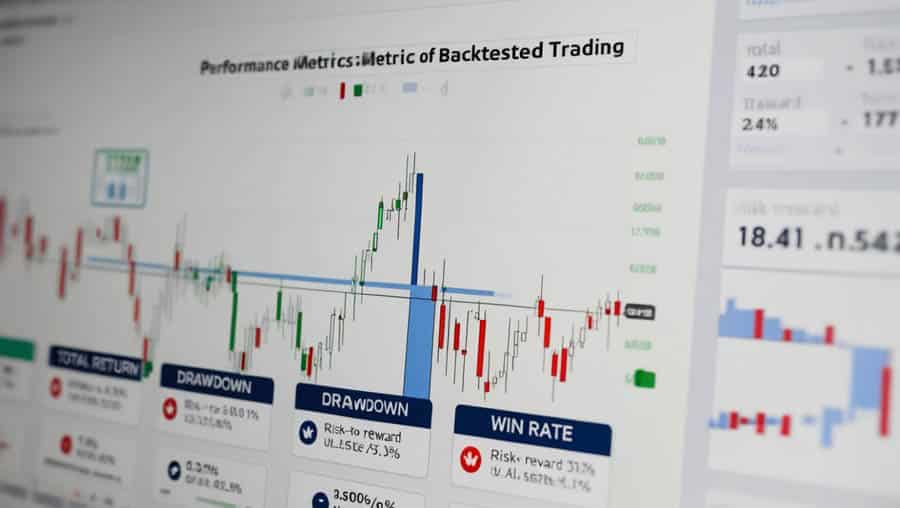The Bollinger Bands strategy was developed by John Bollinger in the early 1980s. It is a highly popular technical analysis tool used to assess the price level and volatility of an asset. The Bollinger Bands consist of three lines: the middle line is an n-period moving average (typically a 20-day simple moving average), while the upper and lower bands are typically set at two standard deviations above and below the middle line.
Strategy Description
- Middle Band: An n-period moving average of the asset, representing the medium-term market trend.
- Upper Band: Two standard deviations above the middle band, indicating a high-volatility price zone.
- Lower Band: Two standard deviations below the middle band, indicating a low-volatility price zone.
Trading Signals
- Buy Signal: When the price touches or falls below the lower band, it may indicate that the asset is undervalued, presenting a buying opportunity. This is often seen as a signal of market overselling.
- Sell Signal: When the price touches or exceeds the upper band, it may indicate that the asset is overvalued, presenting a selling opportunity. This is often seen as a signal of market overbuying.
- Volatility Changes: Changes in the width of the bands reflect changes in market volatility. Widening bands indicate increasing volatility, while narrowing bands indicate decreasing volatility.
Strategy Advantages
- Wide Applicability: The Bollinger Bands strategy can be applied across various markets and timeframes, including stocks, forex, commodities, and more.
- Visual Clarity: The visual nature of the Bollinger Bands makes it easy to identify overbought or oversold conditions in the market.
- Flexibility: Traders can adjust the moving average period and standard deviation multiplier to suit different market conditions and trading styles.
Strategy Disadvantages
- Lagging Nature: As a tool based on historical data, Bollinger Bands can lag behind market movements, potentially leading to delayed signals.
- False Signals: In range-bound or trendless markets, Bollinger Bands may generate misleading signals, resulting in frequent incorrect trades.
- Need for Confirmation: To improve the accuracy of trades, it’s recommended to combine Bollinger Bands with other indicators or analysis tools such as the Relative Strength Index (RSI) or MACD to confirm signals.
Implementation Suggestions
When using the Bollinger Bands strategy, investors should perform backtesting to determine the parameter settings best suited to their trading style. It’s also important to observe the broader market environment and consider signals from other technical indicators to avoid false signals and optimize entry and exit points.
Java Code Example
import java.util.List;
public class BollingerBandsStrategy {
public static void main(String[] args) {
List<Double> prices =
int windowSize = 20;
double numStdDeviations = 2.0;
double upperBand;
double lowerBand;
for (int i = windowSize; i < prices.size(); i++) {
List<Double> window = prices.subList(i - windowSize, i);
double mean = calculateMean(window);
double stdDev = calculateStandardDeviation(window, mean);
upperBand = mean + numStdDeviations * stdDev;
lowerBand = mean - numStdDeviations * stdDev;
double currentPrice = prices.get(i);
if (currentPrice > upperBand) {
} else if (currentPrice < lowerBand) {
}
}
}
private static double calculateMean(List<Double> values) {
double sum = 0.0;
for (double value : values) {
sum += value;
}
return sum / values.size();
}
private static double calculateStandardDeviation(List<Double> values, double mean) {
double sumSquaredDiff = 0.0;
for (double value : values) {
double diff = value - mean;
sumSquaredDiff += diff * diff;
}
double variance = sumSquaredDiff / values.size();
return Math.sqrt(variance);
}
}
Python Code Example
import numpy as np
import pandas as pd
def bollinger_bands_strategy(prices, window_size=20, num_std_deviations=2):
df = pd.DataFrame(prices, columns=['Close'])
df['Mean'] = df['Close'].rolling(window=window_size).mean()
df['Std'] = df['Close'].rolling(window=window_size).std()
df['UpperBand'] = df['Mean'] + num_std_deviations * df['Std']
df['LowerBand'] = df['Mean'] - num_std_deviations * df['Std']
df['Signal'] = 0
df.loc[df['Close'] > df['UpperBand'], 'Signal'] = -1
df.loc[df['Close'] < df['LowerBand'], 'Signal'] = 1
df['Position'] = df['Signal'].diff()
return df
prices = [10.2, 11.4, 10.8, 12.1, 11.7, 10.9, 12.5, 11.8, 12.6, 13.2]
result = bollinger_bands_strategy(prices)
print(result)






